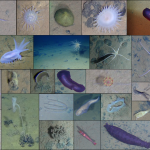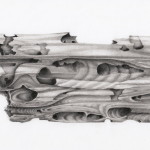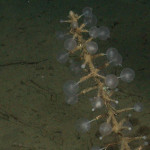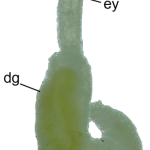An occasional series where we briefly report 3 new studies and tell you why they are cool!
Heightened biodiversity may make an ecosystem more stabile and robust. One of the reasons for this is that high biodiversity may create redundant species, i.e. species that serve a similar ecological role in the ecosystem. A loss of one species may not perturb ecosystem processes, like carbon cycling, because another species steps in to take its place. Imagine two redundant oyster species that both create shell reefs. One may be as good as the other. New work shows that the lovely, but now extinct, ammonoids may have bequeathed ecosystem stability. At times of peak ammonoid diversity and morphological disparity, carbon cycling was stable. After two mass extinctions, when ammonoid diversity and stability were low, carbon cycling was chaotic. During these chaotic times only lazy passively floating, non-swimming, good-for-nothing, ammonoids were around. So…cephalopods are more important than you think. Now beg for their mercy.
Whiteside, J., & Ward, P. (2011). Ammonoid diversity and disparity track episodes of chaotic carbon cycling during the early Mesozoic Geology, 39 (2), 99-102 DOI: 10.1130/G31401.1
Let’s face it, the loss of ammonoids is not the only reason things went to shit during the history of Earth. Widespread oxygen depletion, i.e. anoxia, is frequently pointed at as a driver of every mass extinction in the fossil record. Bite me anoxia! Boo…booooo! But new work suggest anoxia may not be the evil bastard we all thought it was. New physical evidence suggest that anoxia was widespread in the Cambrian oceans at the same time a massive radiation of life occurred, i.e. the Cambrian Explosion. The new work is solid using a mixture of several measurements and modeling to recreate a paleo-ocean. The authors suggest that this extreme environmental challenge of widespread anoxia may have provided the spark for the Cambrian Explosion. Sorry I doubted you anoxia. :-(
Gill, B., Lyons, T., Young, S., Kump, L., Knoll, A., & Saltzman, M. (2011). Geochemical evidence for widespread euxinia in the Later Cambrian ocean Nature, 469 (7328), 80-83 DOI: 10.1038/nature09700
If I can’t blame you anoxia then I’m coming for coal fly ash! I got your number baby! At around the 250 Myr ago, 90% of marine species went extinct. But explanations for the Permian Extinction remain elusive. Many blame the eruption of the Siberian Trap flood basalts that occurred at the same time. This nasty bastard would have released a lot of CO2 and methane. But things may have been nastier. Evidence from Permian aged rocks from the Canadian High Arctic immediately before the mass extinction, details another scenario. The lava from the eruptions caused coal and organic-rich sediments to burst into flames! As the authors of the paper note, “The char is remarkably similar to modern coal fly ash, which can create toxic aquatic conditions when released as slurries. We therefore speculate that the global distribution of ash could have created toxic marine conditions.” So FU Coal Fly Ash!
Grasby, S., Sanei, H., & Beauchamp, B. (2011). Catastrophic dispersion of coal fly ash into oceans during the latest Permian extinction Nature Geoscience, 4 (2), 104-107 DOI: 10.1038/ngeo1069





